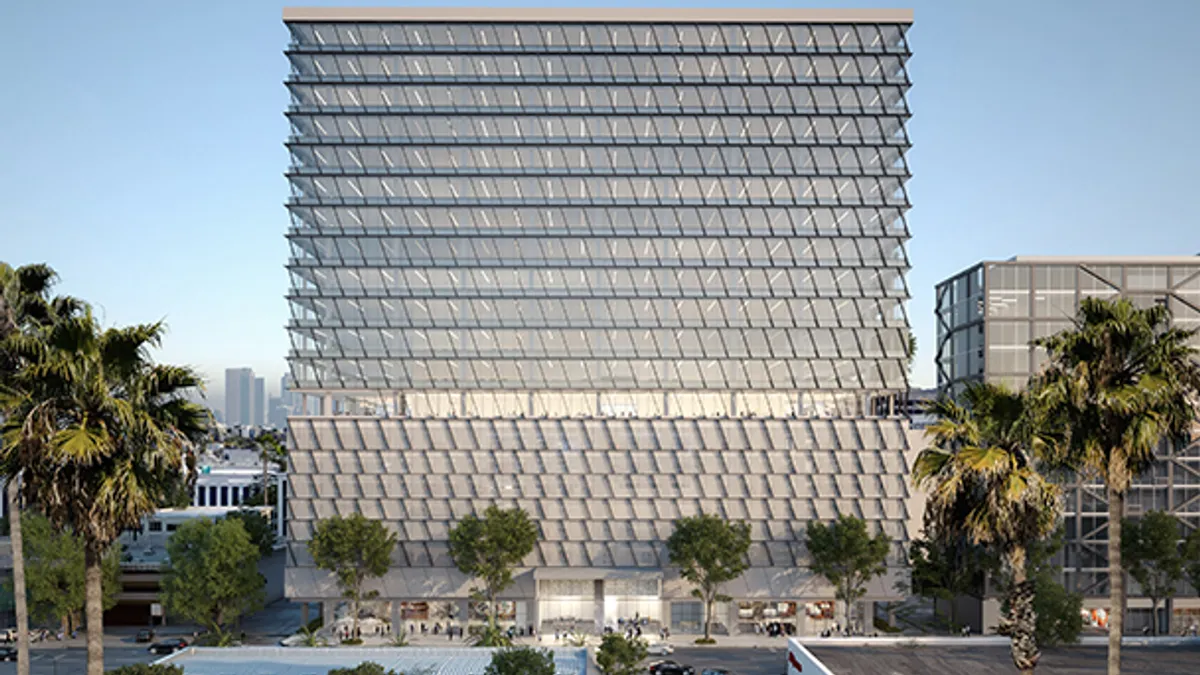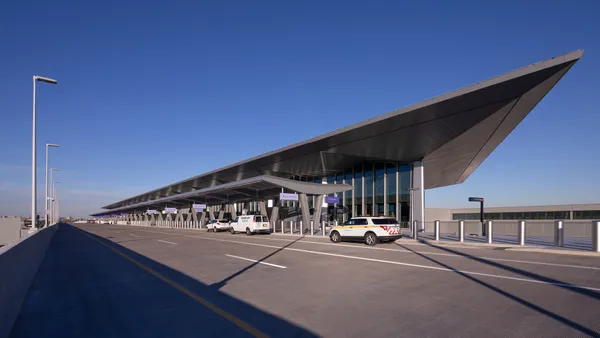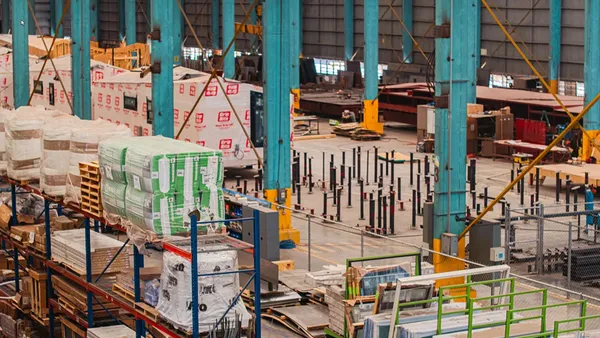Dive Brief:
- Real estate development and management firm Trammell Crow Co. announced that construction has begun on a $453 million Los Angeles mixed-use project under a public-private partnership that will deliver to the city's Koreatown district a transit-oriented development with housing, retail office and community spaces.
- Trammell Crow and its partners — subsidiary High Street Residential; Los Angeles County; Public Facilities Group and Meta Housing Corp. — will build, as part of the Vermont Corridor project, the three-phase development within one block of two major subway lines. The first phase, financed by tax-exempt bonds according to Commercial Executive, will see the construction of a 21-story, 468,000-square-foot Gensler-designed office tower with 7,500 square feet of ground-floor retail and a peer resource center. Hathaway Dinwiddie Construction Co., based in San Francisco, has been hired as the general contractor, and completion is scheduled for the end of 2021. The county plans on moving its Department of Mental Health and Workforce Development, Aging and Community Services offices into the building upon completion.
- The second phase of the development, a 72-unit affordable senior housing complex designed by Y&M Architects, is slated to begin in mid-2019. That project will also feature a 13,000-square-foot community center. The last phase, which is scheduled to start construction in late 2021, will see the conversion of an existing 12-story office building into a 172-unit multifamily complex. The Steinberg Hart-designed project will also include a rooftop amenity deck and 4,700 square feet of ground-floor retail.
Dive Insight:
When it comes to P3s, what often comes to mind are civil infrastructure projects such as highways, bridges and toll roads. While still not the norm, some state agencies have turned over the design, finance, construction and operations of these assets to the private sector while still retaining ownership. However, the P3 model can be used for any public project, like the Vermont Corridor project.
Proponents of the P3 model claim that private industry can deliver a building, road or most anything else more efficiently, allowing the public sector to take advantage of its design, construction and operations expertise, as well as access to financing. One of the major benefits of the structure is that it allows the public entity to spread out payments over a longer period of time, leaving enough cash to finance other projects. Some critics maintain that P3s don't provide long-term financial value because private partners pay more to borrow money and include profit in their pricing.
For contractors that have the opportunity to participate in a P3 for the first time, the Associated General Contractors of America said it's important that construction companies consider a wide range of issues, such as whether their role is short-term or long-term, what kind of financial risk and obligations the deal entails, and what level of community outreach will be required.















